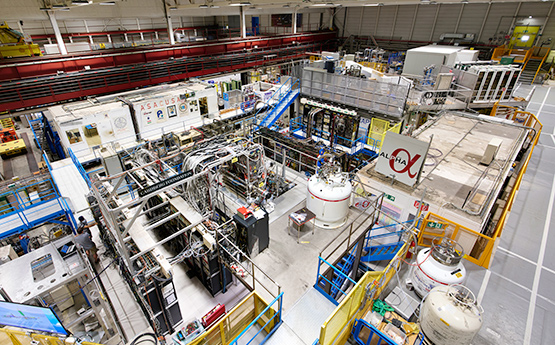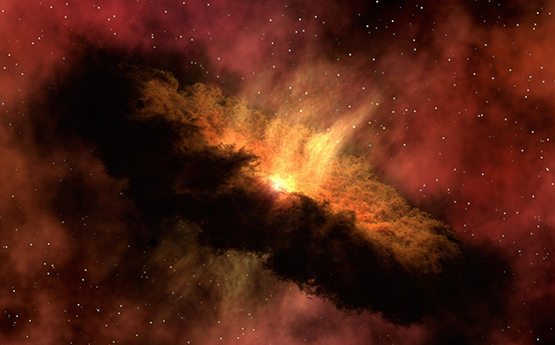ALPHA collaboration at CERN Confirms Antimatter Falls in the Same Way as Matter for the First Time
Swansea University physicists, as leading members of the ALPHA (Antihydrogen Laser Physics Apparatus) collaboration at CERN, have demonstrated that atoms of antihydrogen fall to Earth in the same way as their matter equivalents for the first time.
Published in Nature, this study's groundbreaking results rule out the possibility of antimatter being accelerated upwards in Earth's gravity and bring researchers one step closer to unravelling one of the most high-profile problems in physics.
ALPHA creates antihydrogen atoms by taking negatively charged antiprotons and binding them with positively charged positrons. The neutral but slightly magnetic antimatter atoms are then confined in a magnetic trap, which prevents them from coming into contact with matter and annihilating.
Until now, the team has concentrated on spectroscopic studies in the ALPHA-2 device, shining laser light or microwaves onto the antihydrogen atoms to measure their internal structure. But the ALPHA team has also built a vertical apparatus called ALPHA-g, the 'g' denoting the local acceleration of gravity.
This apparatus makes it possible to measure the vertical positions at which the antihydrogen atoms annihilate with matter once the trap's magnetic field is switched off, allowing the atoms to escape.
Researchers trapped groups of about 100 antihydrogen atoms, one group at a time, and then slowly released the atoms over a period of 20 seconds by gradually ramping down the current in the top and bottom magnets of the trap.
Computer simulations of the ALPHA-g set-up indicate that this operation – for matter – would result in about 20% of the atoms exiting through the top of the trap and 80% through the bottom, a difference caused by the downward force of gravity.
By averaging the results of seven release trials, the ALPHA team found that the fractions of anti-atoms exiting through the top and bottom are in agreement with the expectations from the simulations.
The complete study involved repeating the experiment several times for different values of an additional "bias" magnetic field, which could either enhance or counteract the force of gravity.
After analysing the data, the team found that, within the precision of the current experiment (about 20% of g), the acceleration of an antihydrogen atom is consistent with the familiar, attractive gravitational force between matter and the Earth.
Swansea University's Professor Niels Madsen, Deputy Spokesperson of ALPHA, said: "It's exciting to see Swansea University play a part in the first direct observation of the effect of gravity on antimatter, setting the stage for future much more detailed measurements sought by multiple collaborations. Ultimately, physics is about how the universe works, and we can only truly know through rigorous measurement."
Professor Stefan Eriksson, leading high precision metrology in ALPHA, said: "Albert Einstein's theory of General Relativity, which describes gravity, requires that objects fall to Earth in exactly the same way, independently of their composition. This has never been tested for antimatter until now. For us in the ALPHA collaboration, the future is about increasing the precision of our measurements to explore if there is a difference between matter and antimatter. Even the tiniest difference could help explain why there is essentially no antimatter left in the universe."
Emeritus Professor Mike Charlton added: "This experiment, first proposed around 40 years ago, is a landmark in atomic physics and marks the start of a new age in antihydrogen studies."
Read the paper in full: Observation of the effect of gravity on the motion of antimatter.


